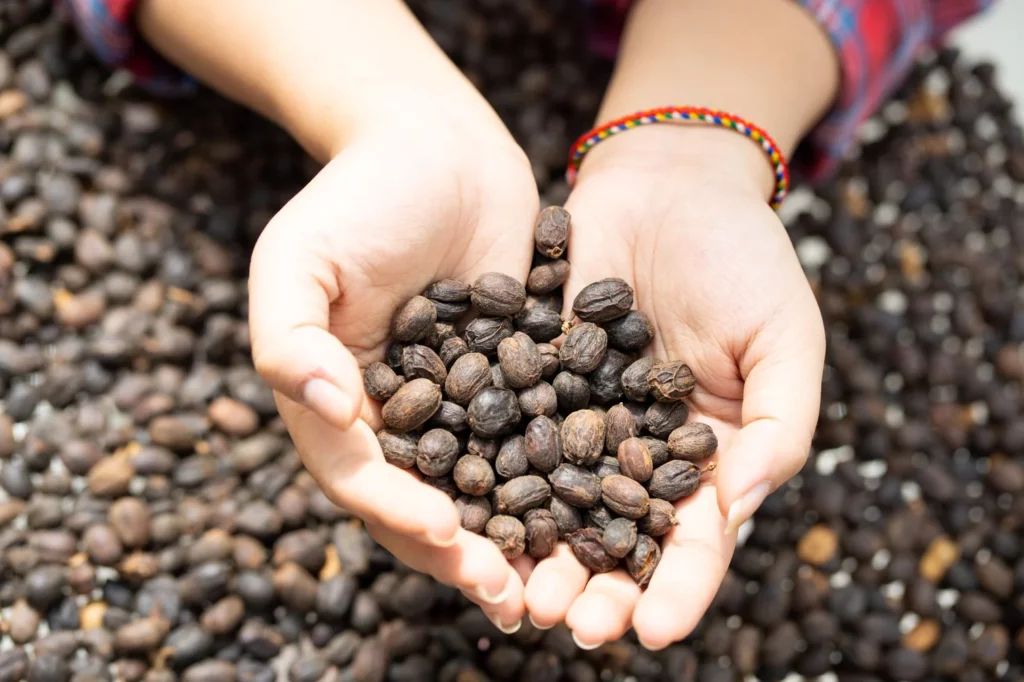What To Do With Coffee Grounds ?
Coffee is for enjoyment. What remains in the cup of coffee is the quintessence, the most delicious. Otherwise, the waste is the coffee grounds. Some people already know how to take advantage of this waste to create unique products from coffee. Let’s find out with Han.
1. Oil from coffee grounds
Oil extracted from coffee grounds is being tested by the Revive Eco company (Scotland) to replace conventional palm oil. It is known that to get palm oil, the tropical rain forests in Malaysia and Indonesia are being exploited and severely destroyed. Therefore, using coffee grounds oil helps to both protect the forest and treat a large amount of waste from the coffee industry.
Researchers offer many potential applications of coffee grounds oil in the food, beverage, cosmetics and pharmaceutical sectors such as hair care, deodorizing, cleaning …

2. Coffee mask
Mask made from coffee fibers ensures antibacterial, reusable many times, saves users and most importantly protects the environment thanks to its biodegradable ability. The outer layer is woven with coffee fibers, using PowerKnit technology, washable every day. Inside is a biodegradable membrane, produced by technology that combines silver nanoparticles and coffee.

The special feature of this mask is the natural coffee scent that makes wearing the mask no longer something too claustrophobic but becomes more relaxing and comfortable.
3. Cosmetic production
Coffee grounds have caffeine, enough fat, minerals and linoleic acid (considered as a vitamin) … These are very good nutrients for skin beauty, exfoliation, antibacterial, cleansing and nourishing. white skin. Therefore, coffee grounds are a source of raw materials that cannot be ignored with the direction of cosmetic production.

Products from coffee grounds such as soap, exfoliants, hair conditioner, mascara, white bath powder, lipstick … have many advantages but must be mentioned with high safety and pleasant natural fragrance.
4. Environmentally friendly cups

These special cups are made of coffee grounds with wood pulp, with a layer of bioplastic made of cellulose, lignin and sap.
Kaffeeform cups can be used continuously for more than 3 years, during hot water exposure, these cups can create beautiful Patina colors in the glass.
The “framing” process for Kaffeeform glasses is environmentally friendly using only pressure and heat. On average, about 6 cups of coffee used will produce enough coffee grounds to form a Kaffeeform.
5. Shoes made from coffee grounds
To produce a shoe, the input materials will be 300 grams of used coffee grounds and six recycled plastic bottles. In addition to being wet-proof, the Rens shoes will be lighter and have good odor resistance.
Rens shoe thread is a synthetic polyester thread from coffee grounds. In addition, synthetic polyester also makes the shoe water resistant, which is a remarkable advantage of Rens.
What’s more, even though the outside of the shoe is still wet, water cannot get inside. If water gets on the outside, it will dry very quickly, even 2 times faster than normal fabric.

6. Biofuel manufacturing
Most of the time, coffee grounds are now discarded products after use. For conventional method of processing coffee grounds into biofuel: mix coffee grounds with haxane at 60 ºC for one to two hours, to extract oil from coffee grounds. Next, the haxane will be evaporated and the essential oil remains. Methanol and a catalyst will be added to form the biofuel and glycerol by-products are also generated from the process. Finally separating the filter to create biofuel for human use.

Recently, Professor Vesna Najdanovic-Visak (Lancaster University, UK) has developed a new technique in processing coffee grounds into biofuel called an on-site conversion process, which simplifies 2 Extracting oil and turning oil into biofuel is only one step away. The Haxane is completely removed, and methanol and several other catalysts are added directly to the compound. And so, oil extracted from coffee grounds by this process only takes about 10 minutes instead of 1 to 2 hours as before.
(Source: Google)

